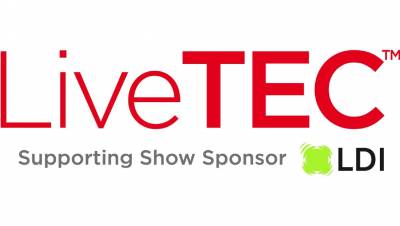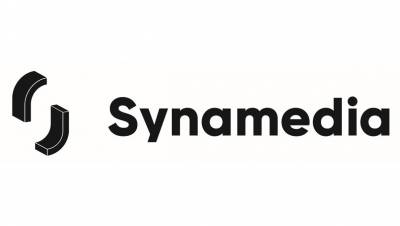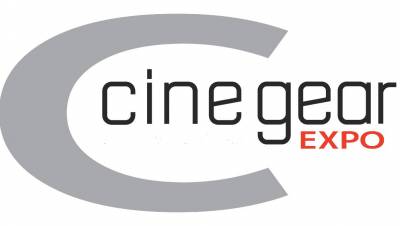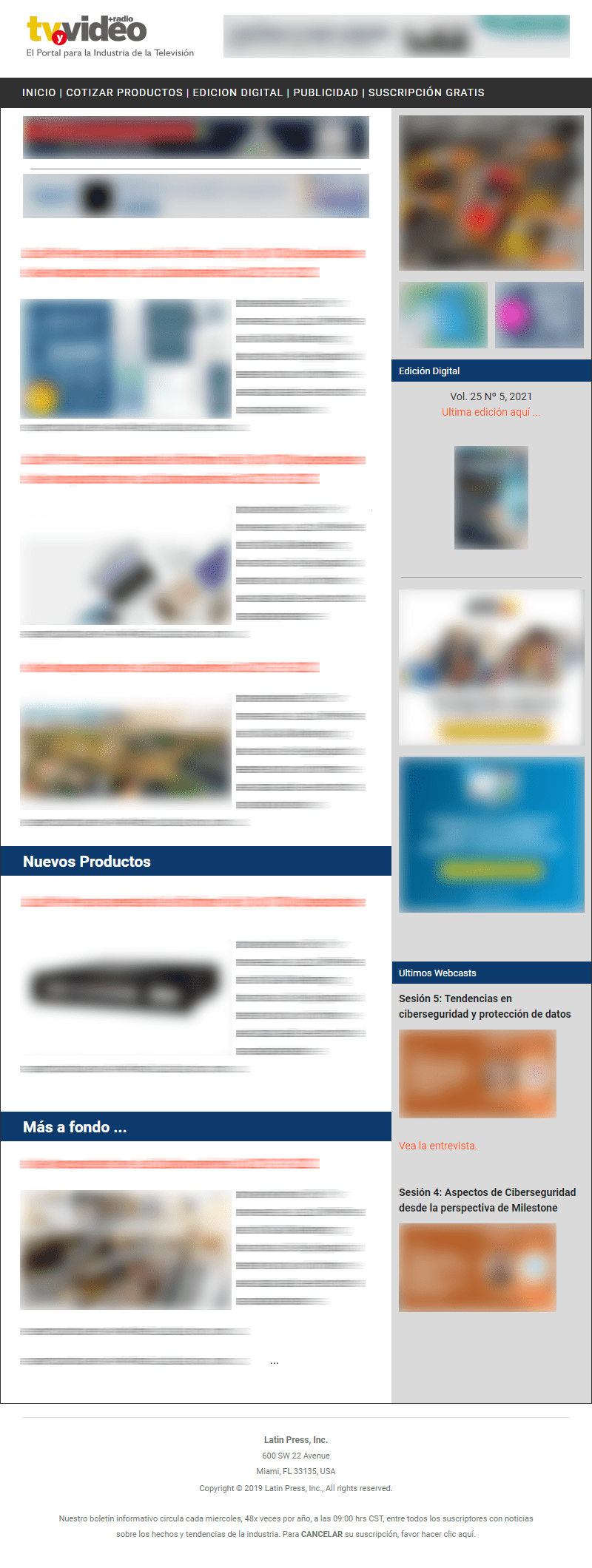After long trials and the good judgment of the Federal Communications Commission of the United States, the reception of satellite signals became legal in 1984, although limited under certain rules that in 1986 had their critical point when most programmers decided to encode their signals.
With this step, what we now know in Latin America as DTH (Direct TV to Home) service was born, that is, the legal reception of satellite transmissions with digital quality, under defined standards.
New generations of satellites caused their transmission bands to split, assigning the low-power C-band and the high-power Ku and Ka bands. The C band operates with powers from 8.5 to 16 watts and the Ku band operates between 20 and 50 watts.
The antennas of the Ku band because they are so short in diameter can be mounted on a cornice of the house – and not on the roof – but more than this, they offer three great advantages for viewers.
1. Increased number of TV channels.
2. Better image quality.
3. Coverage of 100% of the national territory.
The first will offer in the near future the possibility of having access to more than 70 channels, through video compression techniques. It can be transmitted to satellites and pick up signals from many parts of the world, digitally encoded – up to ten signals per band. Tests in Canadian laboratories have achieved compression of up to 13 television channels with sufficient quality, but it is still in the experimental stage. Undoubtedly, this fact will expand our range of entertainment possibilities.
The improvement in image and sound is achieved thanks to the transformation of audio and video into digital codes of zeros and ones. Every electronic impulse recorded by cameras and sound recorders is translated by electronic elements into endless sequences of zeros and ones.
Digital technology is already a fact, but before entering into terms of coverage at the national level, for the Mexican user there are two key factors that will make the difference in the market offer: what the television companies will offer and at what cost.
The fight for the Mexican television market continues... who competes
In the first place is Galaxy Latin America, an association formed by the most important satellite manufacturer worldwide. Hughes Communications; Cisneros Organization of Venezuela; Televisión Abril, from Brazil, and Mexicana Multivisión, from Joaquín Vargas, who will provide the service through Direct TV Latin America.
In second place is the alliance formed by News Corporation, TCL International, Organización Globo de Brasil and the Mexicana Televisa, by Emilio Azcárraga.
And as a third option emerged the Medcom Corporation, of the Mexican group RED, of Clemente Serna, which in strategic alliance with the American Scientific Atlanta, will build a center of operation of signals transmitted by satellite seeking to compete in the national market called Telered.
Businessmen and experts agree that this interest in the same service and in the same region is no coincidence. By contrast, the Latin American pay-TV market is larger than that of Germany or Japan and ranks fourth globally.
The Mexican market: Latin American DTH springboard
For the protagonists of the competition, the prospects of the business are as attractive as they are fragile. Most Mexican households have access to few TV channels. The combined expertise of cable television operations, multipoint multichannel distribution system (MMDS) and sophisticated DTH technology will open doors for millions of viewers to an immense number of programming selections they have never had access to.
Although technically the MDDS system allows greater use of satellite conveyors, the number of channels is still limited. The DTH system allows you to download up to 150 channels without greater need than a terrestrial storage and distribution center for the operator and an antenna and a decoder for the user.
According to the estimated purchasing power of the population, DTH services in Mexico have a potential client base of more than 2 million families by 2001.
The proposal by News Corp., Grupo Globo of Brazil and Televisa of Mexico also inserts radio channels. Direct TV will have the possibility to offer 144 television channels and more than 60 dedicated to varied music. Television channels include pay per view, entertainment programming, sports, cultural notes, news and children's programs, among others. The difficulty will lie in meeting the high demand for programming and the cost. Its investment plans amount to $500 million over the next 18 months.
In relation to the proposal of Galaxy Latin America, and according to the US/Latin Trade magazine of February 1996, the satellite signal will arrive in April to Mexico, Brazil and Venezuela completely covering the Latin market by 1997 with the "new super TV service". Its programming will include the pay per view system and Latin American and European entertainment and educational productions. The cost of the set-top box and antenna will be less than $600. Its investment plans reach US$250 million with the expectation of achieving one million subscriptions in the first year.
For its part, the company Telered of the Medcom Group, has no partners. Its short-term goal is to win the Mexican television market and later that of Latin America.
Whatever the perspectives of each protagonist, the DTH service will not miss 1997 to integrate millions of viewers of the Latin American market with greater success than the expansion of NAFTA or Mercosur could achieve. However, experts question whether the Latin American consumer will be able to withstand more than two competitors.
DTH: competition of concessions in we will see...
However, the competing companies have not yet obtained the concession to provide telecommunications services in Mexican territory using foreign satellites.
Mexico's Federal Telecommunications Law states that concessions may only be granted to occupy foreign satellites using national airspace as long as Mexico has reciprocity agreements with the country of whose nationality those space devices are. Currently, Mexico has an agreement of this type with Argentina so that the Nahuel satellites of that country and the Mexican Solidarity can provide services both in the southern country and in Mexican territory. However, there are no treaties with the United States, so the Galaxy Latin America association cannot yet operate in Mexico.
In this regard, a number of associations have spoken out against such concessions, describing as a mistake the fact of allowing access to foreign signals and satellites without a balanced correspondence, particularly in relation to US satellites.
In the case of Grupo Televisa and associates, the Ministry of Communications and Transportation has not yet granted the concession of airspace for the transmission of DTH signal, despite having access to Mexican satellites.
In such a scenario, Telered, the direct-to-home television company of the Medcom Group, will have an apparent advantage to launch its DTH system before the competition, since it will use the Mexican satellite Solidaridad II whose concession was granted by the Ministry of Communications and Transport, which already had Multivisión. The only thing that changes is the way of receiving: instead of the typical MDDS antenna, the mini-satellites that distinguish DTH will be used.
From the point of view of the Mexican viewer, the competition for the television market brought to the Chamber of Deputies is very positive, since for the first time the rules of the game could be clearer, without concessions on concessions. While it is true that we will have to wait for the real costs of each protagonist, at least there is no longer talk of an audiovisual monopoly.
Medcom and Scientific Atlanta: strategic alliance in the transmission of DTH in Mexico
Interviewed in his offices south of Mexico City, Jorge Galina Veraza, Medcom's director of operations, spoke to TV&VIDEO Latin America about the aforementioned project that, rather, is already a reality.
Galina pointed out that "Telered's production strategy is focused on effectively serving the Mexican market, with the best national and international programming available. To make the DTH service more attractive, Telered will make available to the Mexican public different programming packages, each with different combinations of interest.
"The DTH service that will be obtained by subscription, is an option for current pay TV consumers to get more channels and the best of the programming of other countries with digital quality, for which they will need 2 elements: a small antenna of just 120 centimeters in diameter and a decoder box.
"From the outset, the service will offer no less than 70 channels generated by 10 transporters of the Mexican satellite Solidaridad II through the Ku band. Each Medcom set-top box will cost the public between $800 and $900, and will come with an antenna 60 to 90 cm in diameter, depending on the subscriber's location."
Why did you choose Scientific Atlanta?
"Last February," said Galina, "a group of executives and technicians from Corporación Medcom, made a visit to the facilities of the company Scientific Atlanta in the city of Atlanta, Georgia, to learn about the manufacturing advances of the sophisticated equipment of what will be the first digital Medcom teleport that will link with the Solidaridad II satellite making use of the sophisticated equipment of what will be the first digital Medcom teleport that will link with the Solidaridad II satellite making use of the sophisticated equipment of what will be the first digital Medcom teleport that will link with the Solidaridad II satellite making use of it. of the Ku band and that will fully cover the Mexican territory".
Scientific Atlanta, is one of the leading companies in the world that designs, operates and installs satellite complexes within international parameters of excellence, being one of the largest suppliers of NASA communication equipment. For the flight programs of Atlantis carriers.
For the closing of this edition (March 7), the working meetings focus on the last details of a technical nature necessary for the installation of teleport: signal conduction and digital systems for the automation and transmission of pay per view services and the final design of the complex buildings that will house the entire package of electronics necessary to carry the compressed signals of 60 channels to the orbit of 35,500 kilometers above the equator and that Solidaridad II will return to Earth to be captured and "decompressed" by the so-called Set Top Boxes that will be in homes Mexicans shortly.
Mexico, along with Chile, Peru, Colombia, Venezuela and Brazil, is one of the countries that offers the greatest market growth possibilities due to the low penetration of cable television, which together is only 15 percent in the area. However, Medcom's expansion into South America will be in the medium term, first achieving its consolidation in the Mexican Republic and then depending on the availability of South American satellites.
With the signing of the agreement for the construction of the Signal Operations Center – which is where programming signals are received, compressed, encoded and transmitted to the satellite – Medcom takes the first step to be able to offer, very soon, the first Mexican Satellite Television System to the Home (DTH).
























Leave your comment